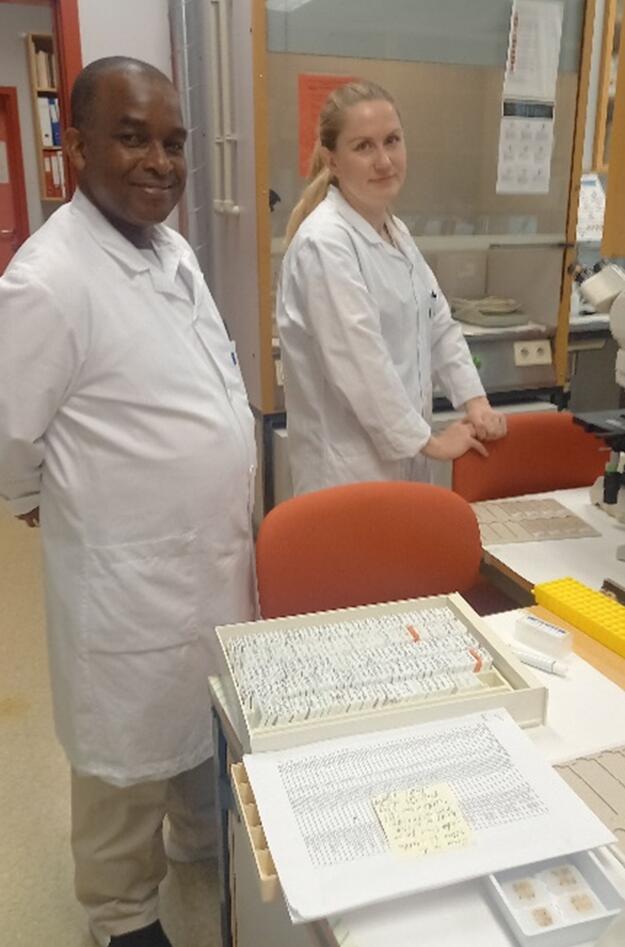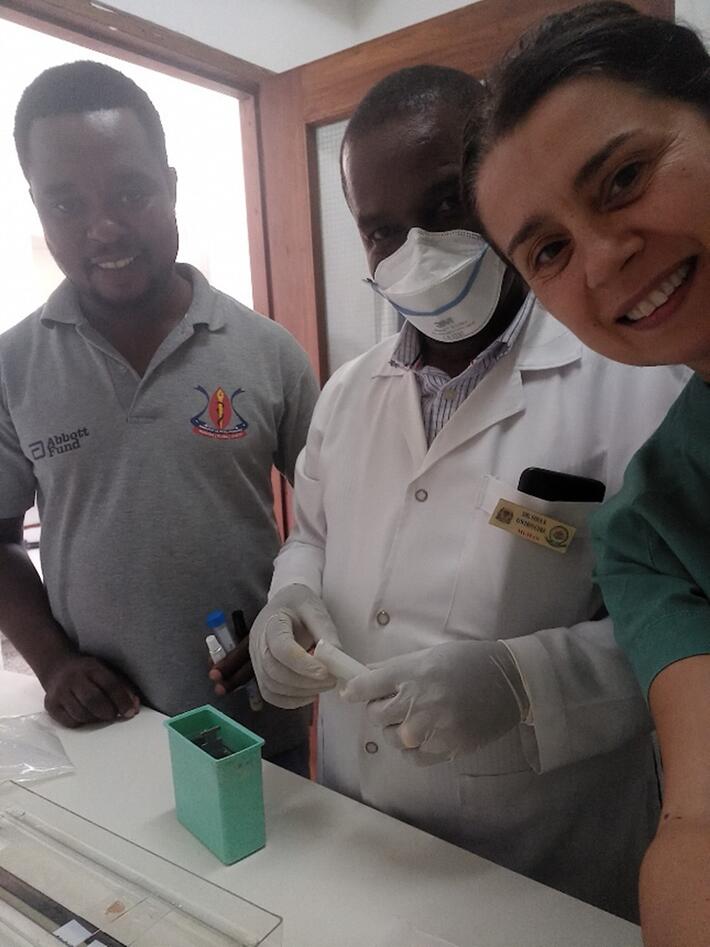Collaboration with Tanzania on head and neck cancer
The research group of Professor Daniela Costea is currently engaged in a DIKU/NORPART funded collaboration project with partners in Tanzania, establishing immunohistochemistry for p16 as a method for more precise diagnostic of head and neck cancers (HNC). CCBIO has just had a visit from Tanzania, and Professor Costea has just returned from a 2 week stay in Dar Es Salaam where she worked with optimization and quality control of the method for diagnostic purposes.

Main content
The collaboration is part of the project Establishment of Joint Research-Based Education in Dentistry in Norway and East Africa, funded by the Norwegian Agency for International Cooperation and Quality Enhancement in Higher Education (DIKU) in the framework of the NORPART program. The Tanzanian partner institutions in the head and neck cancer project are the Muhimbili University of Health and Allied Sciences (MUHAS) and Muhimbili National Hospital in Dar es Salaam.
Visit from Tanzania
For this purpose, Dr. Sira Owibingire, senior lecturer and oral maxillofacial surgeon at the Department of Oral and Maxillofacial Surgery, School of Dentistry at MUHAS and Muhimbili National Hospital, was last month visiting the laboratories at CCBIO for learning the immunohistochemistry method and transferring the new skills to his home laboratories.
Dr. Owibingire is currently undertaking PhD studies at MUHAS with a project on ethiology and reasons for delay of head and neck cancers in Tanzania, with Professor Costea as one of the supervisors. "With the increasing prevalence of human papilloma virus (HPV)-related head and neck cancers (HNC) and the new WHO classification of these tumors, it is essential that the prevalence of HPV-related HNC is mapped at my home institution as well, and that we have a method for diagnosing them," Dr. Owibingire explains.
"I came in March to CCBIO at UiB for a 3 week period with tissue samples from 183 HNC from Tanzania to do laboratory tests for detecting high risk HPV in these samples," he continues. "The methods I learned and used there were immunohistochemistry for p16 (p16IHC) and RNA in-situ hybridization (RNA-ISH)."
Thorough procedure for material transfer
Travelling with such samples is however not without its challenges, as material transfer has to follow strict international protocols, and at the point of exit and entry to a country, there is a need to be sure that recommended procedures are followed. Hence, at the airport checkpoints for luggage inspections, Dr. Owibingire was stopped and thoroughly interrogated, showing all the required documents, signed and endorsed material transfer agreement, letter from the issuing laboratory at the Muhimbili National Hospital, confirmation letters from the home university and also an invitation letter from the UiB, and the proper identity cards. All was thorougly investigated before he was allowed to proceed and take the samples to the CCBIO labs. Although a tedious exercise to go through, Dr. Owibingire finds it reassuring that the procedure is that thorough, to avoid misuse of tissues.
Establishing good routine diagnostic procedures at MUHAS
After his stay in Bergen, Dr. Owibingire returned to MUHAS together with Professor Costea, and together, they have successfully established and calibrated the IHC for p16 as a surrogate marker for HPV-related HNC at the Pathology Department at Muhimbili National Hospital.
"I am extremely happy that we managed to establish the method for diagnosing HPV-related HNC at our collaborative institution in Dar es Salaam," says Professor Costea.
"HPV-related HNC appears to be a wholly different disease than that classically described for HPV-negative tumors, which are typically driven by the carcinogenic effects of tobacco and alcohol exposure," she continues. "HPV has been shown to play a pivotal role in defining a subset of patients with distinct carcinogenesis, risk factors, clinical presentation – and very important – with better prognosis after radio- or chemotherapy. HPV infection is the only established predictive biomarker we have for HNC, thus it is very important to be determined for the correct diagnosis and treatment of this disease. In Norway, we use DNA detection methods for routine diagnosis of HPV in HNC, but in the U.S. and other countries, immunohistochemistry for p16 is considered a reliable surrogate marker for HPV infection and used for diagnostic purposes in oropharyngeal cancer. This method is feasible in resource limited settings and thus was the method of choice for our collaborators in Tanzania. This is a major step for more precise diagnostic of HNC in Tanzania, with major consequences for planning and management of this disease at the collaborative institutions there," Costea explains.
"It also contributes to standardization of the diagnostic and management procedures for HNC, paving the way for multicenter studies in the HNC research field that we and our collaborators at MUHAS are very keen on establishing in the future," she concludes.
We look forward to the continuation and results of this project!


